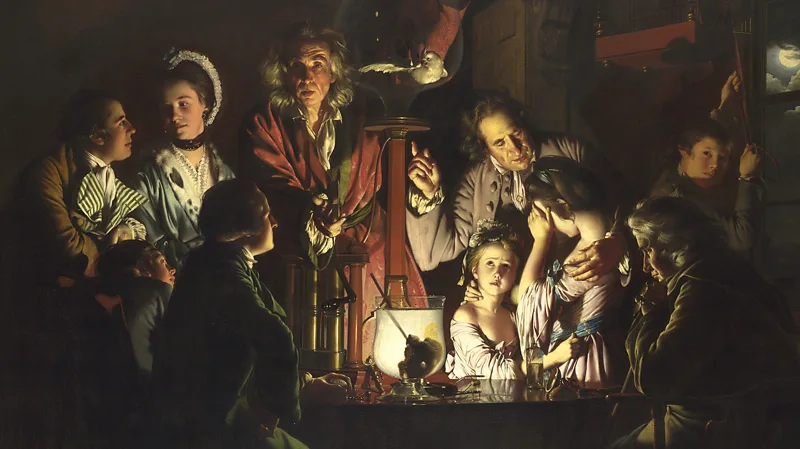When did modern art truly begin? Many experts place its origins in the 19th century, pointing to iconic works like Édouard Manet’s Le Déjeuner sur l’Herbe (1863), J.M.W. Turner’s Rain, Steam, and Speed (1844), or Francisco Goya’s The Third of May 1808 (1814). But a new exhibition at London’s National Gallery suggests the revolution may have started almost a century earlier with Joseph Wright of Derby’s An Experiment on a Bird in the Air Pump (1768).
Wright’s painting captures a dramatic science experiment: a white cockatoo is deprived of air in a glass vessel, surrounded by a captivated audience. The composition radiates tension, with each spectator reacting differently. A young couple on the left seem distracted by each other, two girls on the right recoil in horror, while men near the foreground attempt to hide their fear. A boy at the back draws a curtain to dim the moonlight, and the scene is illuminated by a lantern placed behind a jar containing a human skull—symbolism and science intertwined.
What makes this work “modern”? Wright cleverly blends classical artistic techniques with contemporary subject matter. He borrows traditional lighting and composition methods but applies them to a scientific experiment, creating a visual story that conveys suspense, emotion, and human curiosity—hallmarks of modern art long before the 1800s.
An Experiment on a Bird in the Air Pump demonstrates that modern art may not be confined to the 19th century—it could have quietly begun in the 1760s, with Wright capturing both human emotion and intellectual curiosity in a single, unforgettable scene.
#ModernArt #JosephWright #ArtHistory #NationalGallery #1768Masterpiece #ArtInnovation #ScienceInArt #HistoricalArt #ArtExhibition #ClassicMeetsModern







